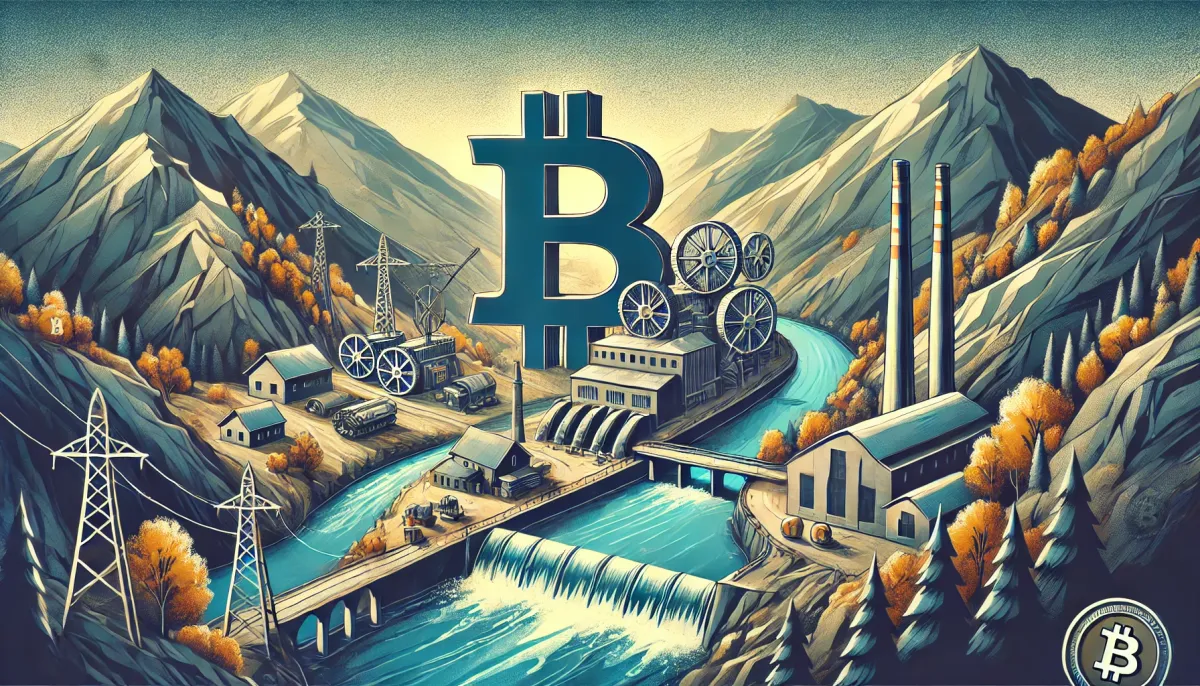Heat Reuse and Energy Integration in Bitcoin Mining
On February 13, 2025, the Build-a-Mine Podcast featuring Jaron Mellerud explored how industrial Bitcoin mining leverages surplus heat to stabilize energy grids.

- My 'briefing notes' summarize the content of podcast episodes; they do not reflect my own views.
- They contain (1) a summary of podcast content, (2) potential information gaps, and (3) some speculative views on wider implications.
- Pay attention to broadcast dates (I often summarize older episodes)
- Some episodes I summarize may be sponsored: don't trust, verify, if the information you are looking for is to be used for decision-making.
Summary
On February 13, 2025, the Build-a-Mine Podcast featuring Jaron Mellerud explored how industrial Bitcoin mining leverages surplus heat to stabilize energy grids. The discussion emphasized technical challenges like water pressure synchronization and temperature control, alongside regulatory and scalability issues. These insights highlight a pathway toward cost-effective, integrated energy solutions in Bitcoin mining.
Take-Home Messages
- Strategic Energy Absorption: Bitcoin mining can effectively utilize surplus renewable and nuclear energy to prevent waste.
- District Heating Integration: Coupling mining operations with district heating systems can lower fuel costs and enhance grid stability.
- Technical Optimization: Overcoming challenges in water pressure and temperature control is essential for operational reliability.
- Regulatory Navigation: Diverse regional permitting and licensing require tailored approaches for successful project deployment.
- Scalable Innovation: Developing decentralized, optimally sized mining facilities is key to long-term economic and energy benefits.
Overview
Jaron Mellerud outlines how industrial Bitcoin mining is evolving from a pure value extraction process to an integral part of energy management. He details projects in Finland, Norway, and Ethiopia where mining operations are coupled with district heating systems. His insights illustrate the dual role of mining as both an energy consumer and a facilitator for heat reuse.
The discussion emphasizes the operational benefits of using surplus energy from renewable and nuclear sources. Mellerud explains that integrating mining with district heating can reduce reliance on traditional fuels, enhancing both economic and environmental outcomes. He highlights real-world examples where this approach has improved grid stability.
Technical challenges are a focal point, with water pressure synchronization and the ability of hydrol-cooled machines to reach optimal temperatures taking center stage. Mellerud notes that minor deviations in these parameters can have system-wide impacts, underlining the need for advanced automation. His technical explanations stress that resolving these issues is critical for scalable deployment.
Comparative regional analysis shows that while stable environments like Finland offer robust infrastructure, emerging markets such as Ethiopia present unique regulatory and operational hurdles. Mellerud’s discussion reflects a careful balance between innovation and caution in adapting mining technologies to diverse energy systems.
Stakeholder Perspectives
- Municipal Utilities: They benefit from reduced fuel costs and enhanced grid stability through integrated heating systems.
- Energy Regulators: They focus on ensuring that integration technologies meet safety and operational standards while adapting to local policies.
- Industrial Miners: They view these innovations as opportunities to lower operational expenses and boost economic efficiency.
- Equipment Manufacturers: They are driven to develop advanced hydrol-cooling solutions that can reliably achieve higher temperatures.
- Local Communities: They stand to gain from potential reductions in heating costs and improved energy reliability, though they remain attentive to system risks.
Implications and Future Outlook
The integration of Bitcoin mining with district heating systems presents a promising solution for utilizing surplus energy while reducing operational costs. Advances in automation and cooling technologies will be essential to ensure system safety and efficiency. This approach may reshape energy management strategies across regions with variable renewable outputs.
In the near term, optimizing technical parameters such as water pressure and temperature is critical. Successful innovation in these areas will facilitate broader adoption and scalability of mining projects. This evolution has the potential to influence energy policy by demonstrating a viable alternative to traditional energy consumption models.
Long-term, the model offers a blueprint for decentralized energy integration that could extend beyond Bitcoin mining. Regulatory harmonization and technological breakthroughs will play pivotal roles in determining the model’s success. Stakeholders across sectors must collaborate to harness these opportunities and mitigate operational risks.
Information Gaps
- How can Bitcoin mining systems be further optimized to maintain synchronization with district heating system pressure requirements? This question is critical because stable integration ensures the safety and efficiency of the heating network. It will inform the development of advanced automation protocols that minimize operational risks.
- What advancements in hydrol-cooled machine design can reliably achieve water temperatures above 75°C without additional heat pumps? Addressing this technical challenge is essential for reducing project costs. Improved designs would enhance the economic viability and scalability of integrated mining-heating projects.
- What is the optimal scale for Bitcoin mining operations to balance economic efficiency with operational manageability? Identifying the ideal facility size can maximize returns and ensure system stability. This research will help stakeholders make informed investment decisions for sustainable growth.
- How do differing regulatory environments in regions like Finland and Ethiopia affect the deployment of integrated Bitcoin mining projects? This question is pivotal in understanding cross-border operational challenges. It will aid in formulating strategies that align technological innovation with local regulatory requirements.
- How effectively can Bitcoin mining absorb surplus renewable or nuclear energy during off-peak periods? Exploring this will clarify mining’s role in energy grid stabilization. Insights here are crucial for leveraging mining operations to reduce energy waste and enhance overall system efficiency.
Broader Implications for Bitcoin
Energy Grid Resilience
The integration of Bitcoin mining into district heating systems can significantly bolster energy grid resilience. By acting as a dynamic load balancer, mining operations help absorb surplus energy that would otherwise be wasted. This model may drive a broader shift toward more sustainable, decentralized energy management practices.
Decentralized Energy Solutions
Leveraging surplus energy for both mining and heating introduces a new paradigm in decentralized energy management. This approach encourages the development of smaller, flexible facilities rather than relying on large-scale centralized plants. It could spur innovation across energy and technology sectors, leading to more robust, locally adapted energy solutions.
Economic and Environmental Benefits
Integrating Bitcoin mining with heat reuse can reduce operating costs for district heating and lower carbon emissions by minimizing the reliance on biomass and fossil fuels. The cost savings realized by utilities may eventually translate into lower energy bills for consumers. This convergence of economic and environmental incentives may serve as a catalyst for policy reforms that promote sustainable energy practices.



Comments ()